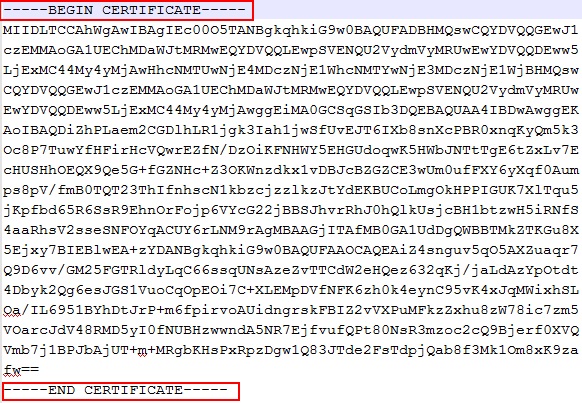Configuring CICS® Distributed Program Link (DPL) agent to use HTTPS
Rational® Integration Tester and
Rational Integration Tester
Agents do not trust self-signed certificates by default, such as the SSL certificate generated for
use in the Rational Test Control Panel server
configuration. To use HTTPS, configure a CICS® Distributed Program Link (DPL) agent that
communicates with Rational Test Control Panel.
About this task
- Exporting the Rational Test Control Panel server certificate to a file
- Importing the Rational Test Control Panel server certificate into the RACF database
For more information about the RACF commands used in this
topic, see RACF command syntax.
Note: Mozilla Firefox
was used to capture the screen shots used in this topic. The options
you see on the user interface might be different in Microsoft Internet
Explorer and Google Chrome.
Exporting the Rational Test Control Panel server certificate to a file
Procedure
Results
Importing the Rational Test Control Panel server certificate into the RACF database
Before you begin
As the currently logged in user, ensure that you have access to the following profiles:
- RACDCERT ADDRING: You must have the SPECIAL attribute
or sufficient authority to modify the IRR.DIGTCERT.ADDRING resource
in the FACILITY class. The following table shows
the authority required for the RACDCERT ADDRING function:
Table 1. Authority required for RACDCERT ADDRING function Access level Purpose READ Create a key ring for your own user ID. UPDATE Create a key ring for another user. - READ RACDCERT ADD:
You must have the following authorizations:
- The SPECIAL attribute or sufficient authority to the IRR.DIGTCERT.ADD resource in the FACILITY class for the intended purpose, as shown in Table 1.
- READ access to the data set that contains the certificate being added.
When you, as the current user, have access to ICSF services and the CSFSERV class is active, additional access to resources in the CSFSERV class might be required as follows:- When specifying PKDS, ICSF, or PCICC, you must have READ access to the CSFIQF, CSFPKI, CSFPKRC, and CSFPKRW resources.
- If the certificate you are adding has an ECC key, you must also
have the following access authorities:
- When you specify PKDS, you must have READ access to the CSFDSV and CSFOWH resources.
- When you omit PKDS, you must have READ access to the CSF1PKV, CSF1TRC, CSF1TRD, and CSFOWH resources.
The following table shows the authority required for the RACDCERT ADD function:Table 2. Authority required for the RACDCERT ADD function Access level Purpose READ Add a certificate to your own user ID. UPDATE Add a certificate for another user ID. CONTROL Add a SITE or CERTAUTH certificate. - RACDCERT CONNECT:You must have the SPECIAL attribute or sufficient authority to the following resources in the FACILITY class, based on the certificate owner, key ring owner, and the USAGE value:
- IRR.DIGTCERT.CONNECT
- IRR.DIGTCERT.ADD
The following table shows the access control checks that are performed when connecting to your own key ring:Table 3. Access control checks done when connecting to your own key ring USAGE value Your own certificate Anonther user's certificate SITE or CERTAUTH certificate PERSONAL READ authority to IRR.DIGTCERT.CONNECT UPDATE authority to IRR.DIGTCERT.CONNECT CONTROL authority to IRR.DIGTCERT.CONNECT SITE CERTAUTH CONTROL authority to IRR.DIGTCERT.ADD and READ authority to IRR.DIGTCERT.CONNECT CONTROL authority to IRR.DIGTCERT.ADD and UPDATE authority to IRR.DIGTCERT.CONNECT UPDATE authority to IRR.DIGTCERT.CONNECT The following table shows the access control checks that are performed when connecting to another user's key ring:Table 4. Access control checks done when connecting to another user's key ring USAGE value Your own certificate Another user's certificate SITE or CERTAUTH certificate PERSONAL CONTROL authority to IRR.DIGTCERT.CONNECT CONTROL authority to IRR.DIGTCERT.CONNECT CONTROL authority to IRR.DIGTCERT.CONNECT SITE CERTAUTH CONTROL authority to IRR.DIGTCERT.ADD and CONTROL authority to IRR.DIGTCERT.CONNECT CONTROL authority to IRR.DIGTCERT.ADD and CONTROL authority to IRR.DIGTCERT.CONNECT CONTROL authority to IRR.DIGTCERT.CONNECT





